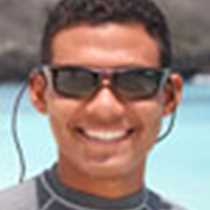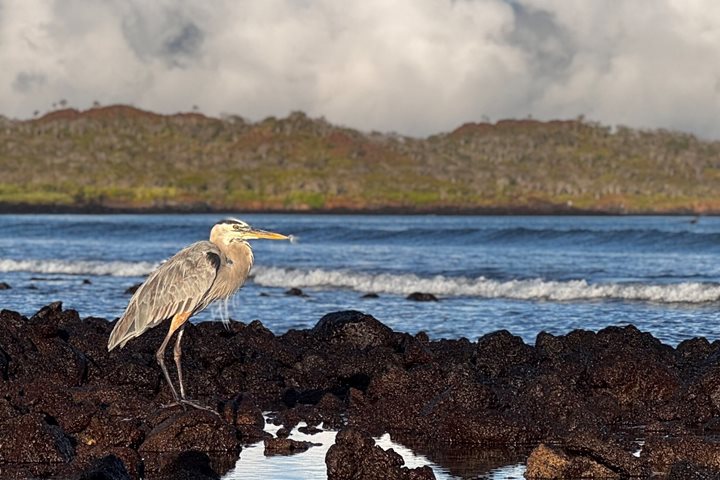As the National Geographic Endeavour prepares to enter Darwin Bay in Genovesa Island, our guests come up on deck to observe several hundred birds flying above the ship. The naturalists point out that the birds in sight are red-footed boobies and that we happened to be inside of the largest nesting area for them on the face of the earth. The captain drops anchors in the calm waters of Darwin Bay and we ready ourselves for an exciting day.
Right after breakfast, Vanessa, our expedition leader announces that we are disembarking to “Prince Philip’s steps”, this is a 90-foot climb from sea level to the top of the cliff. Before we make our dry landing, the skiff driver Alex takes for a ride along the cliffs the caldera, we spot many sea birds on the way and the Galapagos fur seals resting comfortably on the lava rocks almost as if we would not be there, some of them swam next to the skiff welcoming us.
We climb to the top and find ourselves surrounded by Nazca boobies and some of their first hatchlings are visible from the very trail we walk on, “its feeding time” one of our guests says as one of the adults boobies lands nest to the chick and the newborn eagerly stretches its neck to be fed, we witness feeding form up close and then some frigate birds hover above our heads as if they were trying to steal the food from the boobies.
Our guests walk through the dry forest of “Palo Santo” a deciduous tree which offers support for the nesting sites of the red-footed boobies; we see several of them quite close and some guarding their chicks. We reach the other side of the point and almost immediately clouds of what seems to be swarm of insects are seen at the distance but as we look with our binoculars we realize they are not insects but tiny swallow like birds, I mention then to my group we are watching one of the largest nesting colonies in the world of storm petrels relatives to albatrosses, and one of the reasons for their odd flight serves a very important purpose, avoid the attack of the top predator of the island “the short-eared owl”.
We spot at the distance a couple of owls waiting at the entrance of a crevice patiently for petrels to land; they blend right in with the volcanic environment making them perfect predators for when the petrel land they won’t know what hit them.
The skiffs return to the ship so our guests prepare for kayaking and deep water snorkeling, skiffs depart in different directions taking the kayakers to a secluded area close to the cliff face and the snorkelers to the other side of the caldera to look for tropical fish, fur seals and scalloped hammer-head sharks. Our guest return happy after having seen so much from the kayaks and under water.
In the afternoon we land on a white sand beach on the north side of the caldera, some of our guests sit down to put their shoes on and encounter several swallow-tailed gulls nesting nest to them showing no fear at all. We start the visit looking at some tiny marine iguanas that had recently climbed lava rocks to get exposed to the heat and right next to them we find a sea lion pup covering itself with white sand as if it was trying to apply sunscreen. We observed at the distance several frigate birds perching on the green bushes performing some kind of call very time female frigates flew over them, at the same time they would shake their wings and move their pouches; we truly enjoyed this place full of colors and sounds.









